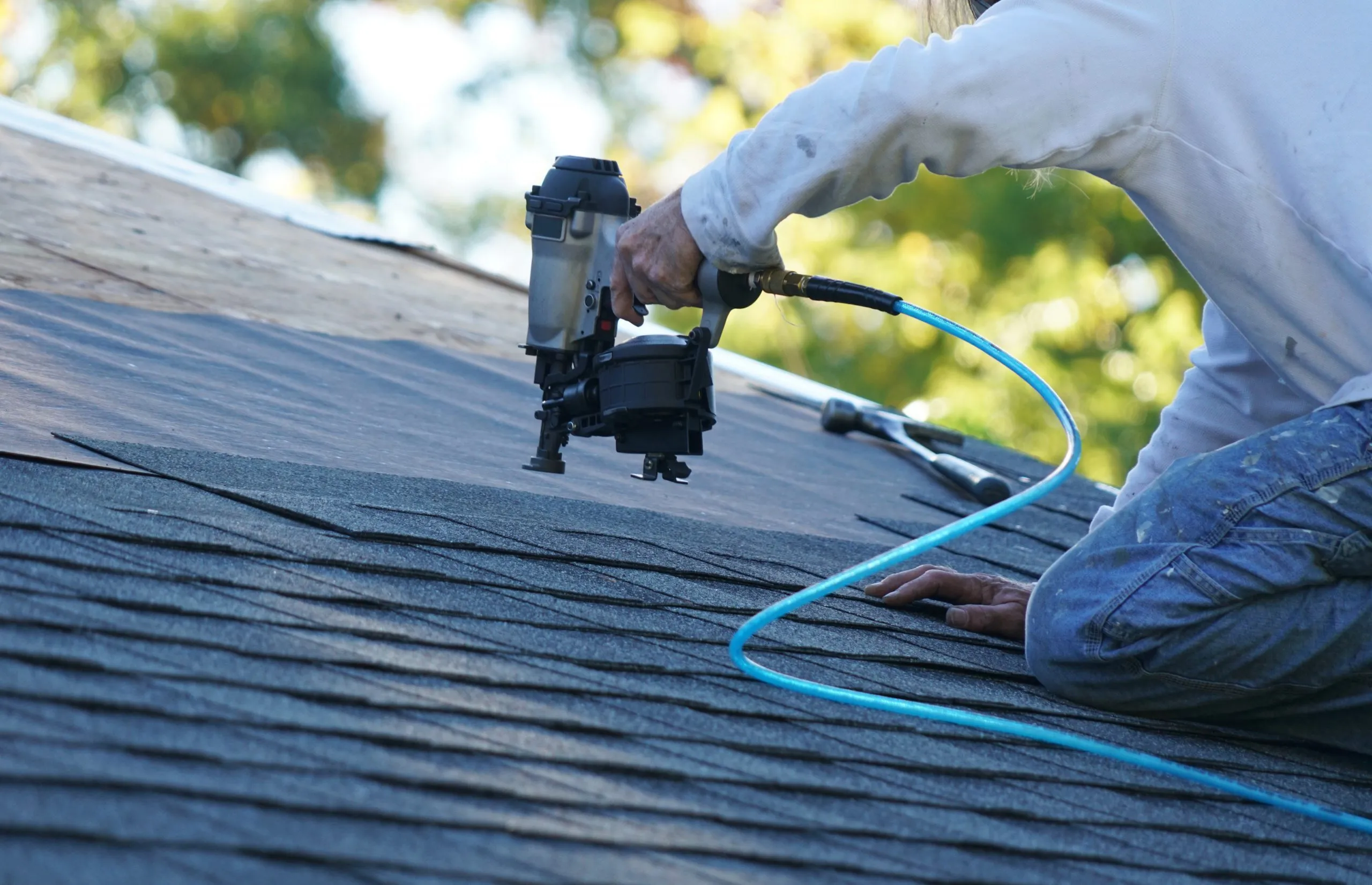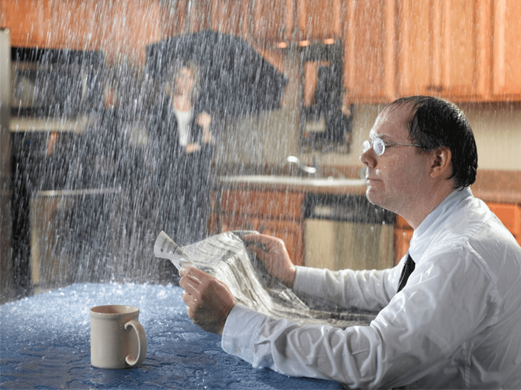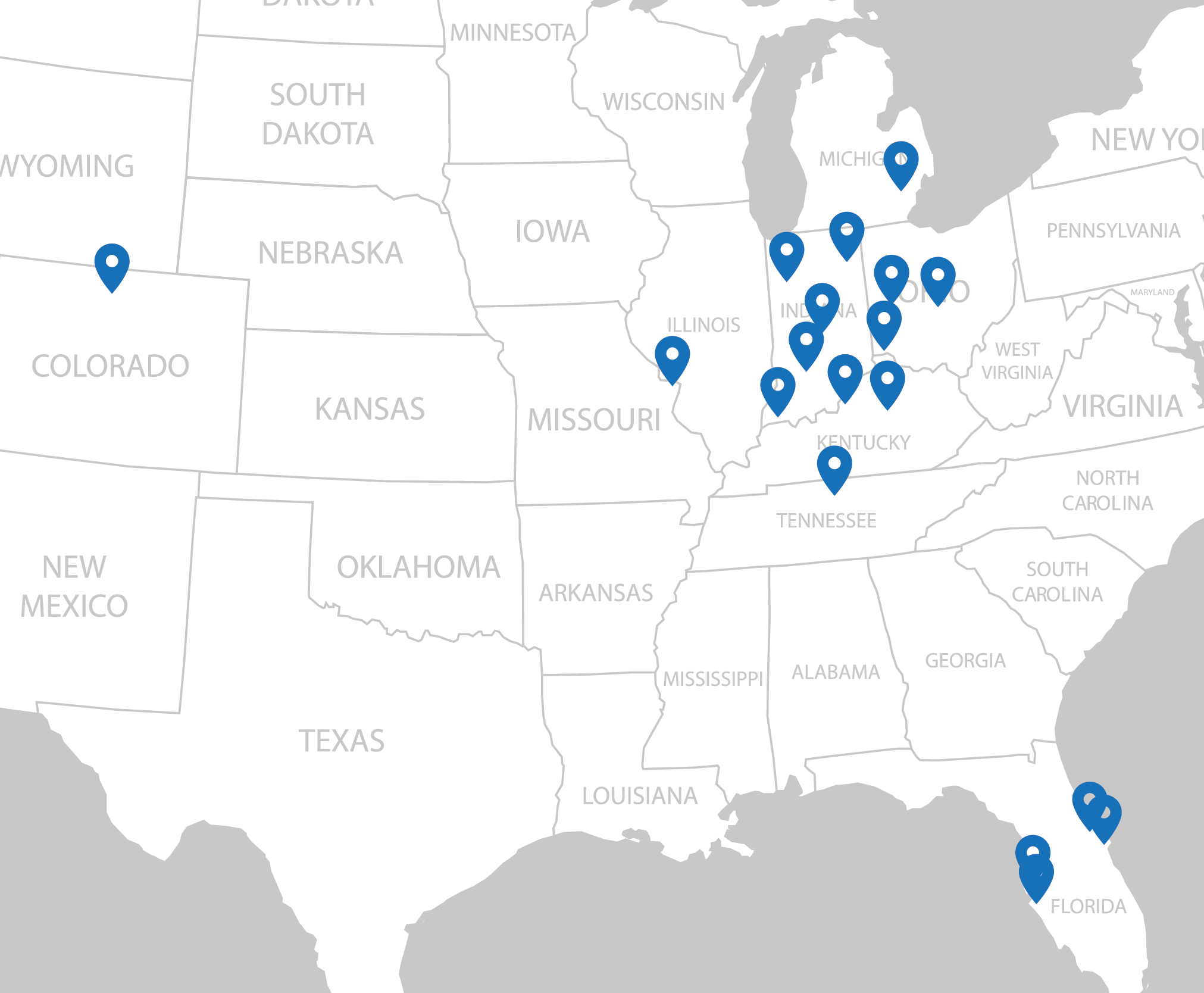Privacy Policy
Last updated June 11, 2024
This privacy notice for Roof One (Part of the Bone Dry Family) (“we,” “us,” or “our”) describes how and why we might collect, store, use, and/or share (“process”) your information when you use our services (“Services”), such as when you:
- Visit our website at roofonemichigan.com or any website of ours that links to this privacy notice.
- Engage with us in other related ways, including any sales, marketing, or events.
Questions or concerns? Reading this privacy notice will help you understand your privacy rights and choices. If you disagree with our policies and practices, please do not use our Services. If you still have any questions or concerns, please contact us at marketing@bonedry.com. SUMMARY OF KEY POINTS This summary provides key points from our privacy notice, but you can find out more details about any of these topics by clicking the link following each key point or by using our table of contents below to find the section you are looking for. What personal information do we process? When you visit, use, or navigate our Services, we may process personal information depending on how you interact with us and the Services, the choices you make, and the products and features you use. Learn more about the personal information you disclose to us. Do we process any sensitive personal information? We do not process sensitive personal information. Do we collect any information from third parties? We may collect information from public databases, marketing partners, social media platforms, and outside sources. Learn more about information collected from other sources. How do we process your information? We process your information to provide, improve, and administer our Services, communicate with you for security and fraud prevention, and comply with the law. We may also process your information for other purposes with your consent. We process your information only when we have a valid legal reason to do so. Learn more about how we process your information. In what situations and with which parties do we share personal information? We may share information in specific situations and with specific third parties. Learn more about when and with whom we share your personal information. How do we keep your information safe? We have organizational and technical processes and procedures in place to protect your personal information. However, no electronic transmission over the internet or information storage technology can be guaranteed to be 100% secure, so we cannot promise or guarantee that hackers, cybercriminals, or other unauthorized third parties will not be able to defeat our security and improperly collect, access, steal, or modify your information. Learn more about how we keep your information safe. What are your rights? Depending on where you are located geographically, the applicable privacy law may mean you have certain rights regarding your personal information. Learn more about your privacy rights. How do you exercise your rights? The easiest way is to submit a data subject access request or contact us. We will consider and act upon any request in accordance with applicable data protection laws. Want to learn more about what we do with any information we collect? Review the privacy notice in full.
- WHAT INFORMATION DO WE COLLECT?
Personal information you disclose to us TL;DR: We collect personal information that you provide to us. We collect personal information that you voluntarily provide us when you express an interest in obtaining information about us or our products and Services when you participate in activities on the Services or when you contact us. Personal Information Provided by You. The personal information we collect depends on the context of your interactions with us and the Services, your choices, and the products and features you use. The personal information we collect may include the following:
- names
- phone numbers
- email addresses
- mailing addresses
- contact preferences
Sensitive Information. We do not process sensitive information. All personal information you provide must be true, complete, and accurate, and you must notify us of any changes to such personal information. Information automatically collected TL;DR: Some information — such as your Internet Protocol (IP) address and/or browser and device characteristics — is collected automatically when you visit our Services. We automatically collect certain information when you visit, use, or navigate the Services. This information does not reveal your specific identity (like your name or contact information) but may include device and usage information, such as your IP address, browser and device characteristics, operating system, language preferences, referring URLs, device name, country, location, information about how and when you use our Services, and other technical information. This information is primarily needed to maintain the security and operation of our Services, as well as for our internal analytics and reporting purposes. Like many businesses, we also collect information through cookies and similar technologies. The information we collect includes:
- Log and Usage Data. Log and usage data is service-related, diagnostic, usage, and performance information our servers automatically collect when you access or use our Services and which we record in log files. Depending on how you interact with us, this log data may include your IP address, device information, browser type, and settings and information about your activity in the Services (such as the date/time stamps associated with your usage, pages, and files viewed, searches, and other actions you take such as which features you use), device event information (such as system activity, error reports (sometimes called “crash dumps”), and hardware settings).
- Device Data. We collect device data such as information about your computer, phone, tablet, or other device you use to access the Services. Depending on the device used, this device data may include information such as your IP address (or proxy server), device and application identification numbers, location, browser type, hardware model, Internet service provider and/or mobile carrier, operating system, and system configuration information.
- Location Data. We collect location data, such as information about your device’s location, which can be either precise or imprecise. How much information we collect depends on the type and settings of the device you use to access the Services. For example, we may use GPS and other technologies to collect geolocation data that tells us your current location (based on your IP address). You can opt out of allowing us to collect this information either by refusing access to the information or by disabling the location setting on your device. However, if you choose to opt-out, you may not be able to use certain aspects of the Services.
Information collected from other sources TL;DR: We may collect limited data from public databases, marketing partners, and outside sources. In order to enhance our ability to provide relevant marketing, offers, and services to you and update our records, we may obtain information about you from other sources, such as public databases, joint marketing partners, affiliate programs, data providers, and other third parties. This information includes mailing addresses, job titles, email addresses, phone numbers, intent data (or user behavior data), Internet Protocol (IP) addresses, social media profiles, social media URLs, and custom profiles for purposes of targeted advertising and event promotion.
- HOW DO WE PROCESS YOUR INFORMATION?
TL;DR: We process your information to provide, improve, and administer our Services, communicate with you for security and fraud prevention, and to comply with the law. We may also process your information for other purposes with your consent. We process your personal information for a variety of reasons, depending on how you interact with our Services, including:
- To deliver and facilitate the delivery of services to the user. We may process your information to provide you with the requested service.
- To respond to user inquiries/offer support to users. We may process your information to respond to your inquiries and solve any potential issues you might have with the requested service.
- To send administrative information to you. We may process your information to send you details about our products and services, changes to our terms and policies, and other similar information.
- To fulfill and manage your orders. We may process your information to fulfill and manage your orders, payments, returns, and exchanges made through the Services.
- To enable user-to-user communications. We may process your information if you choose to use any of our offerings that allow for communication with another user.
- To request feedback. We may process your information when necessary to request feedback and contact you about using our Services.
- To send you marketing and promotional communications. We may process the personal information you send to us for our marketing purposes if this is in accordance with your marketing preferences. You can opt out of our marketing emails at any time. For more information, see “WHAT ARE YOUR PRIVACY RIGHTS?” below).
- To deliver targeted advertising to you. We may process your information to develop and display personalized content and advertising tailored to your interests, location, and more.
- To protect our Services. We may process your information as part of our efforts to keep our Services safe and secure, including fraud monitoring and prevention.
- To enforce our terms, conditions, and policies for business purposes, to comply with legal and regulatory requirements, or in connection with our contract.
- To respond to legal requests and prevent harm. If we receive a subpoena or other legal request, we may need to inspect the data we hold to determine how to respond.
- To manage user accounts. We may process your information to manage your account and keep it in working order.
- To deliver services to the user. We may process your information to provide you with the requested service.
- To administer prize draws and competitions. We may process your information to administer prize draws and competitions.
- To provide services to you. We may process your information to provide you with the requested service.
- To respond to user inquiries/offer support to users. We may process your information to respond to your inquiries and solve any potential issues you might have with the requested service.
- For other business purposes. We may process your information for other business purposes, such as data analysis, identifying usage trends, determining the effectiveness of our promotional campaigns, and evaluating and improving our Services, products, marketing, and your experience. We may use and store this information in aggregated and anonymized form so that it is not associated with individual end users and does not include personal information. We will not use identifiable personal information without your consent.
- WHAT LEGAL BASES DO WE RELY ON TO PROCESS YOUR INFORMATION?
TL;DR: We only process your personal information when we believe it is necessary and we have a valid legal reason (i.e., legal basis) to do so under applicable law, like with your consent, to comply with laws, to provide you with services to enter into or fulfill our contractual obligations, to protect your rights, or to fulfill our legitimate business interests. This section applies to you if you are in the EU or UK. The General Data Protection Regulation (GDPR) and UK GDPR require us to explain the valid legal bases we rely on in order to process your personal information. As such, we may rely on the following legal bases to process your personal information:
- Consent: We may process your information if you have given us permission (i.e., consent) to use your personal information for a specific purpose. You can withdraw your consent at any time.
- Performance of a Contract: We may process your personal information when we believe it is necessary to fulfill our contractual obligations to you, including providing our Services or at your request prior to entering into a contract with you.
- Legitimate Interests: We may process your information when we believe it is reasonably necessary to achieve our legitimate business interests and those interests do not outweigh your interests and fundamental rights and freedoms. For example, we may process your personal information for some of the purposes described in order to:
- Send users information about special offers and discounts on our products and services.
- Develop and display personalized and relevant advertising content for our users.
- Analyze how our services are used so we can improve them to engage and retain users.
- Support our marketing activities.
- Diagnose problems and/or prevent fraudulent activities.
- Understand how our users use our products and services so we can improve user experience.
- Legal Obligations: We may process your information where we believe it is necessary for compliance with our legal obligations, such as to cooperate with a law enforcement body or regulatory agency, exercise or defend our legal rights, or disclose your information as evidence in litigation in which we are involved.
- Vital Interests: We may process your information where we believe it is necessary to protect your vital interests or the vital interests of a third party, such as situations involving potential threats to the safety of any person.
- WHEN AND WITH WHOM DO WE SHARE YOUR PERSONAL INFORMATION?
TL;DR: We may share information in specific situations described in this section and/or with the following categories of third parties. Vendors, Consultants, and Other Third-Party Service Providers. We may share your data with third-party vendors, service providers, contractors, or agents (“third parties”) who perform services for us or on our behalf and require access to such information to do that work. We have contracts in place with our third parties, which are designed to help safeguard your personal information. This means that they cannot do anything with your personal information unless we have instructed them to do it. They will also not share your personal information with any organization apart from us. They also commit to protect the data they hold on our behalf and to retain it for the period we instruct. The categories of third parties we may share personal information with are as follows:
- Ad Networks
- Affiliate Marketing Programs
- Cloud Computing Services
- Communication & Collaboration Tools
- Data Analytics Services
- Data Storage Service Providers
- Financial & Accounting Tools
- Government Entities
- Order Fulfillment Service Providers
- Payment Processors
- Performance Monitoring Tools
- Product Engineering & Design Tools
- Retargeting Platforms
- Sales & Marketing Tools
- Social Networks
- Testing Tools
- User Account Registration & Authentication Services
- Website Hosting Service Providers
Business Transfers. We may share or transfer your information in connection with, or during negotiations of, any merger, sale of company assets, financing, or acquisition of all or a portion of our business to another company. Affiliates. We may share your information with our affiliates, in which case we will require those affiliates to honor this privacy notice. Affiliates include our parent company and any subsidiaries, joint venture partners, or other companies that we control or that are under common control with us. Business Partners. We may share your information with our business partners to offer you certain products, services, or promotions. Other Users. When you share personal information (for example, by posting comments, contributions, or other content to the Services) or otherwise interact with public areas of the Services, such personal information may be viewed by all users and may be publicly made available outside the Services in perpetuity. Similarly, other users will be able to view descriptions of your activity, communicate with you within our Services, and view your profile. Mobile Contact Information: We will not share mobile contact information with third parties or affiliates for marketing/promotional purposes. All other categories exclude text messaging originator opt-in data and consent; this information will not be shared with any third parties.
- DO WE USE COOKIES AND OTHER TRACKING TECHNOLOGIES?
TL;DR: We may use cookies and other tracking technologies to collect and store your information. We may use cookies and similar tracking technologies (like web beacons and pixels) to access or store information. Specific information about how we use such technologies and how you can refuse certain cookies is set out in our Cookie Notice.
- HOW DO YOU COMPLY WITH A2P 10DLC MESSAGING RULES?
TL;DR: A2P 10DLC refers to the use of long phone numbers for Application-to-Person (A2P) messaging, including SMS and MMS, for business communications and marketing purposes. We may engage in A2P messaging for various purposes, including but not limited to customer support and service notifications, marketing and promotional messages, and transactional communications. User Consent: Before sending A2P 10DLC messages to users, we ensure that we have obtained proper consent. Users have the option to opt in or opt out of receiving these messages at any time. Consent may be obtained through various methods, including but not limited to website forms, mobile app preferences, and other opt-in mechanisms. Message Content: All A2P 10DLC messages we send comply with CTIA guidelines and applicable regulations. Our messages are clear, transparent, and relevant to the user’s relationship with our business. If you have concerns about the content of our messages or wish to unsubscribe, please follow the instructions provided in the messages.
- HOW LONG DO WE KEEP YOUR INFORMATION?
TL;DR: We keep your information for as long as necessary to fulfill the purposes outlined in this privacy notice unless otherwise required by law. We will only keep your personal information for as long as it is necessary for the purposes set out in this privacy notice unless a longer retention period is required or permitted by law (such as tax, accounting, or other legal requirements). When we have no ongoing legitimate business need to process your personal information, we will either delete or anonymize such information, or, if this is not possible (for example, because your personal information has been stored in backup archives), then we will securely store your personal information and isolate it from any further processing until deletion is possible.
- HOW DO WE KEEP YOUR INFORMATION SAFE?
TL;DR: We aim to protect your personal information through a system of organizational and technical security measures. We have implemented appropriate technical and organizational security measures designed to protect the security of any personal information we process. However, despite our safeguards and efforts to secure your information, no electronic transmission over the Internet or information storage technology can be guaranteed to be 100% secure, so we cannot promise or guarantee that hackers, cybercriminals, or other unauthorized third parties will not be able to defeat our security and improperly collect, access, steal, or modify your information. Although we will do our best to protect your personal information, transmission of personal information to and from our Services is at your own risk. You should only access the Services within a secure environment.
- DO WE COLLECT INFORMATION FROM MINORS?
TL;DR: We do not knowingly collect data from or market to children under 18 years of age. We do not knowingly solicit data from or market to children under 18 years of age. By using the Services, you represent that you are at least 18 or that you are the parent or guardian of such a minor and consent to such minor dependent’s use of the Services. If we learn that personal information from users less than 18 years of age has been collected, we will deactivate the account and take reasonable measures to promptly delete such data from our records. If you become aware of any data we may have collected from children under the age of 18, please contact us at marketing@bonedry.com.
- WHAT ARE YOUR PRIVACY RIGHTS?
TL;DR: In some regions, such as the European Economic Area (EEA), United Kingdom (UK), and Canada, you have rights that allow you greater access to and control over your personal information. You may review, change, or terminate your account at any time. You have certain rights under applicable data protection laws in some regions (like the EEA, UK, and Canada). These may include the right (i) to request access and obtain a copy of your personal information, (ii) to request rectification or erasure, (iii) to restrict the processing of your personal information, and (iv), if applicable, to data portability. In certain circumstances, you may also have the right to object to the processing of your personal information. To make such a request, please use the contact details provided below. We will consider and act upon any request in accordance with applicable data protection laws. If you are located in the EEA or UK and you believe we are unlawfully processing your personal information, you also have the right to complain to your local data protection supervisory authority. You can find their contact details here: https://ec.europa.eu/justice/data-protection/bodies/authorities/index_en.htm. If you are located in Switzerland, the contact details for the data protection authorities are available here: https://www.edoeb.admin.ch/edoeb/en/home.html. Withdrawing your consent: If we are relying on your consent to process your personal information, which may be express and/or implied consent, depending on the applicable law, you have the right to withdraw your consent at any time. You can withdraw your consent at any time by contacting us using the contact details provided in the section “HOW CAN YOU CONTACT US ABOUT THIS NOTICE?” below. However, please note that this will not affect the lawfulness of the processing before its withdrawal nor, when applicable law allows, will it affect the processing of your personal information conducted in reliance on lawful processing grounds other than consent. Opting out of marketing and promotional communications: You can unsubscribe from our marketing and promotional communications at any time by clicking on the unsubscribe link in the emails that we send or by contacting us using the details provided in the section “HOW CAN YOU CONTACT US ABOUT THIS NOTICE?” below. You will then be removed from the marketing lists. However, we may still communicate with you – for example, to send you service-related messages that are necessary for the administration and use of your account, to respond to service requests, or for other non-marketing purposes. Account Information If you would at any time like to review or change the information in your account or terminate your account, you can:
- Log in to your account settings and update your user account.
- Contact us using the contact information provided.
Upon your request to terminate your account, we will deactivate or delete it and the information in it from our active databases. However, we may retain some information in our files to prevent fraud, troubleshoot problems, assist with investigations, enforce our legal terms, and/or comply with applicable legal requirements.
- CONTROLS FOR DO-NOT-TRACK FEATURES
Most web browsers, mobile operating systems, and mobile applications include a Do-Not-Track (“DNT”) feature or setting you can activate to signal your privacy preference and not to have data about your online browsing activities monitored and collected. No uniform technology standard for recognizing and implementing DNT signals has been finalized at this stage. As such, we do not currently respond to DNT browser signals or any other mechanism that automatically communicates your choice not to be tracked online. If a standard for online tracking is adopted that we must follow in the future, we will inform you about that practice in a revised version of this privacy notice.
- DO UNITED STATES RESIDENTS HAVE SPECIFIC PRIVACY RIGHTS?
TL;DR: Yes, if you are a resident of California, you are granted specific rights regarding access to your personal information. California Civil Code Section 1798.83, also known as the “Shine The Light” law, permits our users who are California residents to request and obtain from us, once a year and free of charge, information about categories of personal information (if any) we disclosed to third parties for direct marketing purposes and the names and addresses of all third parties with which we shared personal information in the immediately preceding calendar year. If you are a California resident and would like to make such a request, please submit your request in writing to us using the contact information provided below. If you are under 18 years of age, reside in California, and have a registered account with the Services, you have the right to request the removal of unwanted data that you publicly post on the Services. To request removal of such data, please contact us using the contact information provided below, and include the email address associated with your account and a statement that you reside in California. We will make sure the data is not publicly displayed on the Services, but please be aware that the data may not be completely or comprehensively removed from all our systems (e.g., backups, etc.).
- DO WE MAKE UPDATES TO THIS NOTICE?
TL;DR: Yes, we will update this notice as necessary to stay compliant with relevant laws. We may update this privacy notice from time to time. The updated version will be indicated by an updated “Revised” date, and the updated version will be effective as soon as it is accessible. If we make material changes to this privacy notice, we may notify you either by prominently posting a notice of such changes or by directly sending you a notification. We encourage you to review this privacy notice frequently to be informed of how we are protecting your information.
- HOW CAN YOU CONTACT US ABOUT THIS NOTICE?
If you have questions or comments about this notice, you may email us at marketing@bonedry.com or by mail to: Bone Dry Roofing 7735 Winton Dr. Indianapolis, IN 46268 United States
- HOW CAN YOU REVIEW, UPDATE, OR DELETE THE DATA WE COLLECT FROM YOU?
Based on the applicable laws of your country, you may have the right to request access to the personal information we collect from you, change that information, or delete it. To request to review, update, or delete your personal information, please submit a request to marketing@bonedry.com.








